The Nameless City: First published in The Wolverine, November 1921. Reprinted in Weird Tales, November 1928. Illustration by Joseph Doolin.
This would have been “The Cthulhu Mythos in Weird Tales” if some of HP Lovecraft’s more substantial stories hadn’t been published elsewhere. To prevent sprawl I’ve limited the list to Lovecraft’s own stories even though the Mythos takes in the work of contemporaries such as Clark Ashton Smith, Robert E. Howard, Frank Belknap Long, Zealia Bishop, August Derleth and others. I like seeing the first appearance in print of familiar tales, and I like seeing their accompanying illustrations even if the drawings are inferior pieces, which they often were for the first decade of Weird Tales. These are the short-story equivalent of first editions, and in the case of The Call of Cthulhu you get to see the first printing anywhere of that mysterious name.
The Hound: Weird Tales, February 1924. Illustration by William Fred Heitman.
This issue is also notable for a story by Burton Peter Thom which shares a title with a Mythos-derived song by Metallica, The Thing That Should Not Be.
The Festival: Weird Tales, January 1925. Illustration by Andrew Brosnatch.
The Colour Out of Space: Amazing Stories, September 1927. Illustration by JM de Aragon.
Lovecraft didn’t think that Weird Tales would appreciate this one even though it’s more horror than science fiction so he sent it to Amazing Stories instead.

The Call of Cthulhu: Weird Tales, February 1928. Illustration by Hugh Rankin.
It’s doubtful that Rankin, Senf and co. would have been up to the task of depicting Great Cthulhu or the non-Euclidean nightmare of R’lyeh, but this hardly excuses editor Farnsworth Wright’s decision to give the cover to Elliott O’Donnell’s ridiculous ghost table.
The Dunwich Horror: Weird Tales, April 1929. Illustration by Hugh Rankin.
The Whisperer in Darkness: Weird Tales, August 1931. Illustration by CC Senf.
The Dreams in the Witch House: Weird Tales, July 1933. Illustration by Jayem Wilcox.
By this point Weird Tales was in its imperial phase: Margaret Brundage as cover artist, major contributions from Lovecraft and Clark Ashton Smith (Ubbo-Sathla) plus a reprint of Sheridan Le Fanu’s Green Tea.
At the Mountains of Madness (part 1): Astounding Stories, February 1936. Cover and interior illustrations by Howard V. Brown.
Weird Tales really did reject At the Mountains of Madness so Lovecraft turned once again to the science-fiction world. Editor John W. Campbell was happy to accept the story, which ran over three issues, as well as to borrow the Antarctic location for “Who Goes There?”. There’s an unfortunate Toy Town quality to Howard V. Brown’s illustrations but this was the most lavishly illustrated Lovecraft story to date, as well as his first major cover.
At the Mountains of Madness (part 2): Astounding Stories, March 1936. Illustrations by Howard V. Brown.
At the Mountains of Madness (conclusion): Astounding Stories, April 1936. Illustration by Howard V. Brown.
The Shadow Out of Time: Astounding Stories, June 1936. Cover and interior illustrations by Howard V. Brown.
The Haunter of the Dark: Weird Tales, December 1936. Illustration by Virgil Finlay.
The Thing on the Door-Step [sic]: Weird Tales, January 1937. Illustration by Virgil Finlay.
The Colour Out of Space: Famous Fantastic Mysteries, October 1941. Illustration by Virgil Finlay.
The Shadow Over Innsmouth: First published as a limited-edition chapbook in 1936. Reprinted in Weird Tales, January 1942. Illustration by Hannes Bok.
Elsewhere on { feuilleton }
• The illustrators archive
• The Lovecraft archive

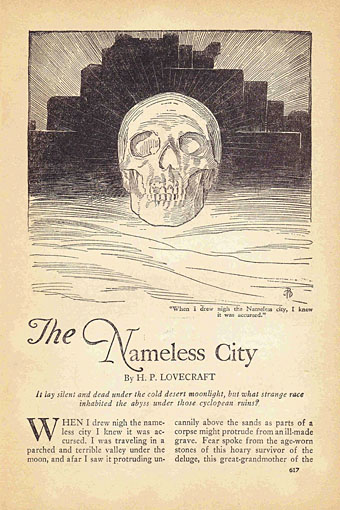
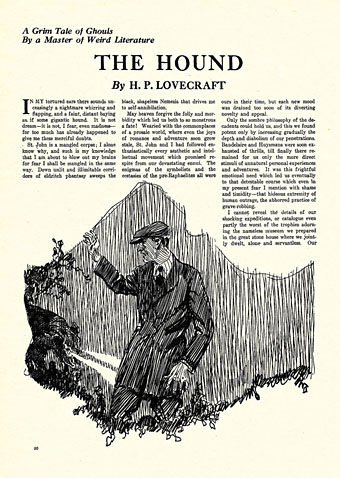
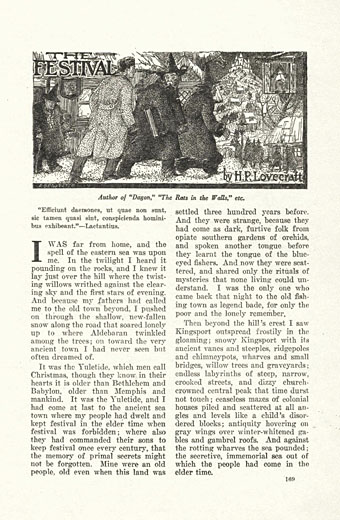
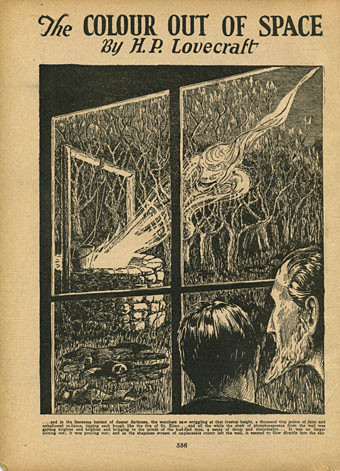
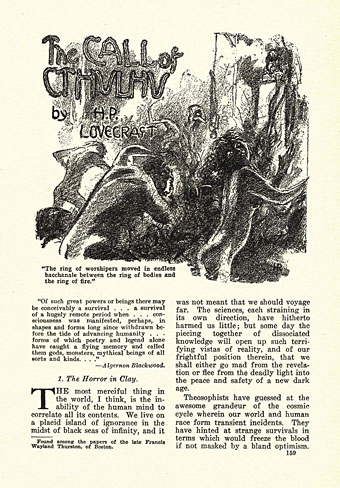
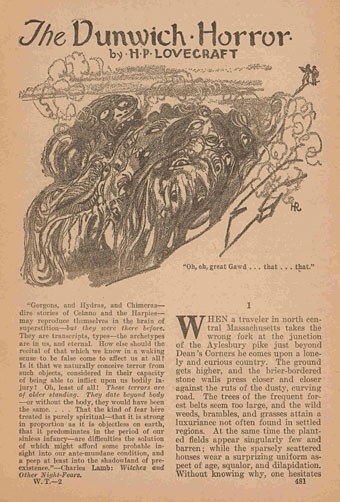
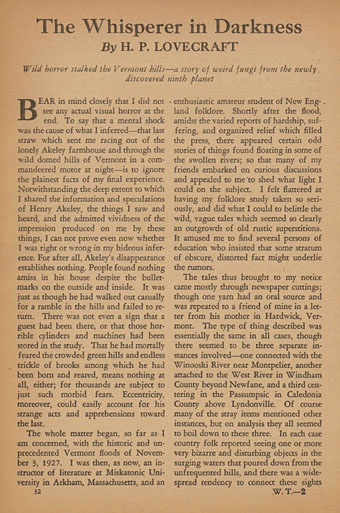
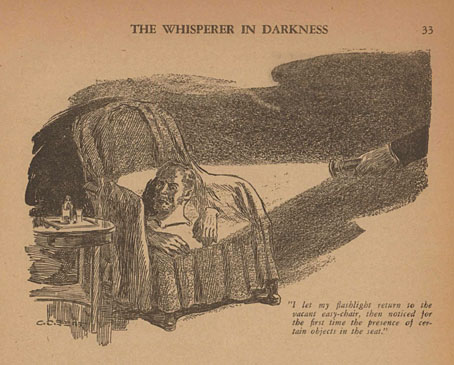
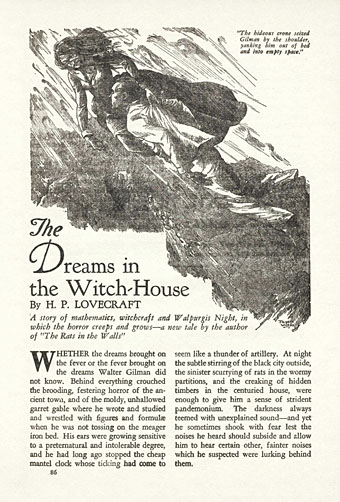
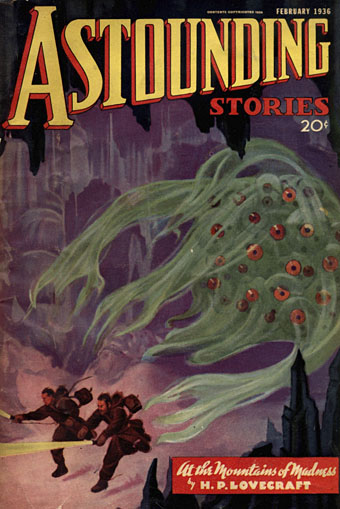
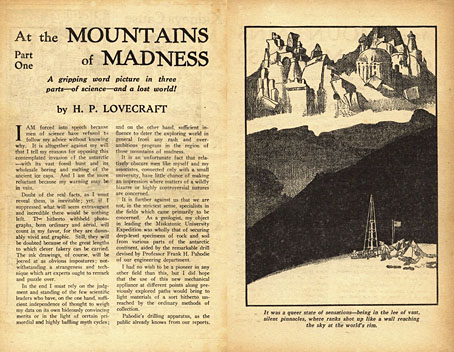
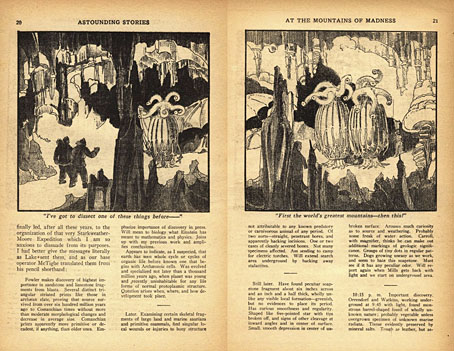
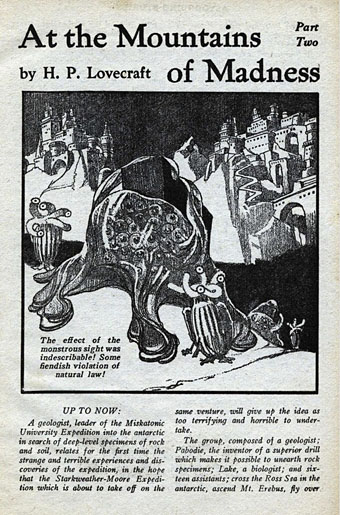
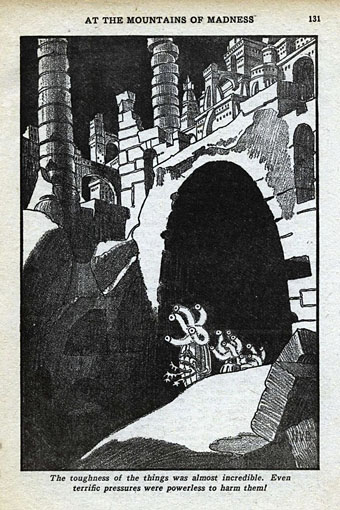
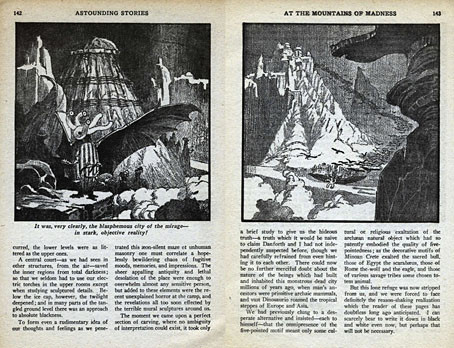
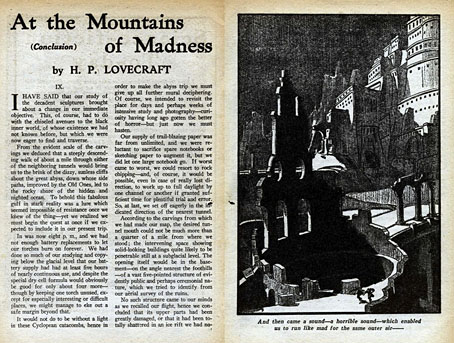
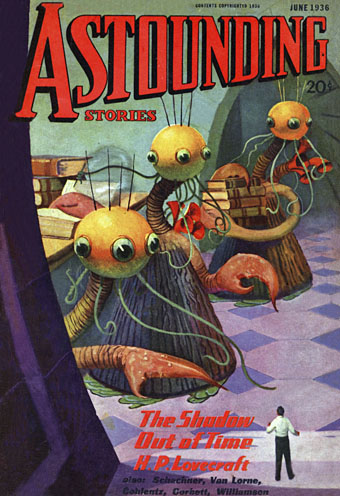
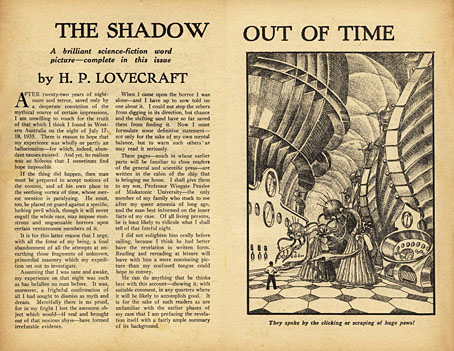
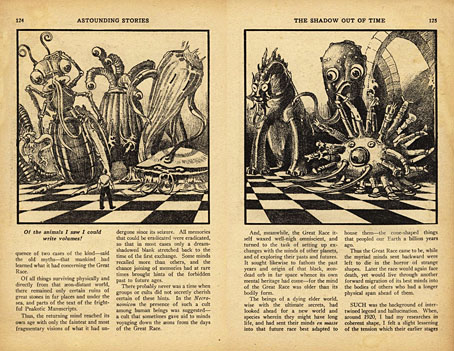
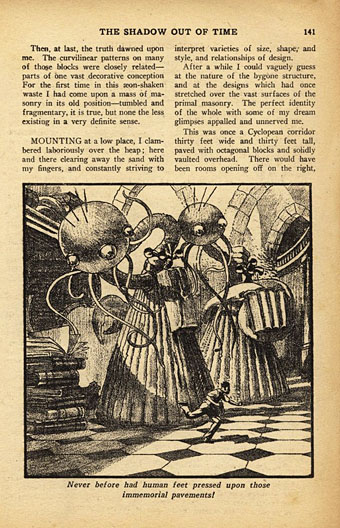
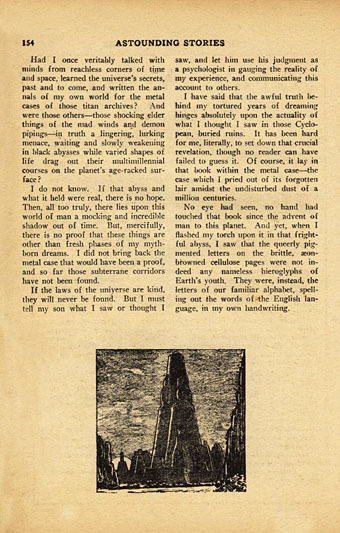
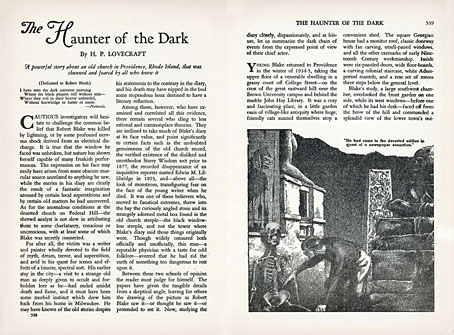
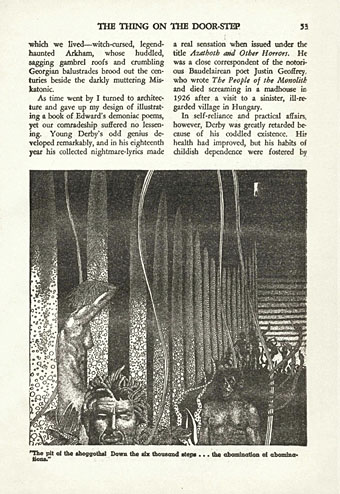
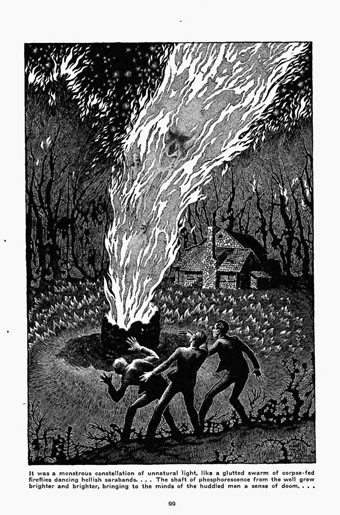
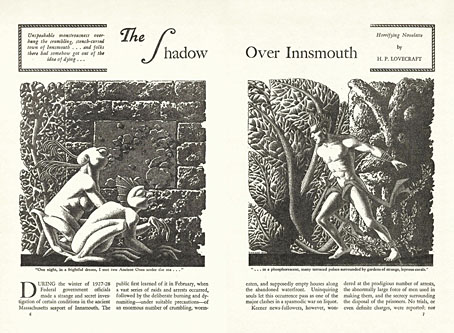
This is excellent! I’ve only ever seen a few of those original publications.
Everybody should have been fortunate enough to have Virgil Finlay as an illustrator. Brown’s covers do have a certain charm. Perhaps his shoggoth is a little more vaporous than squishy but I have always appreciated the members of the Great Race brandishing tomes millions of years before trees evolved.
I think he says the pages are “cellulose” so they could be some kind of plant material. Despite his persistent reputation as a “bad writer” (a claim I always dispute), Lovecraft was careful with his details.
I try not to be too harsh with the old artists, they were not only underpaid but had to suffer seeing their work printed on the worst kind of paper stock. Such indignities make the achievments of an artist such as Virgil Finlay even more impressive.